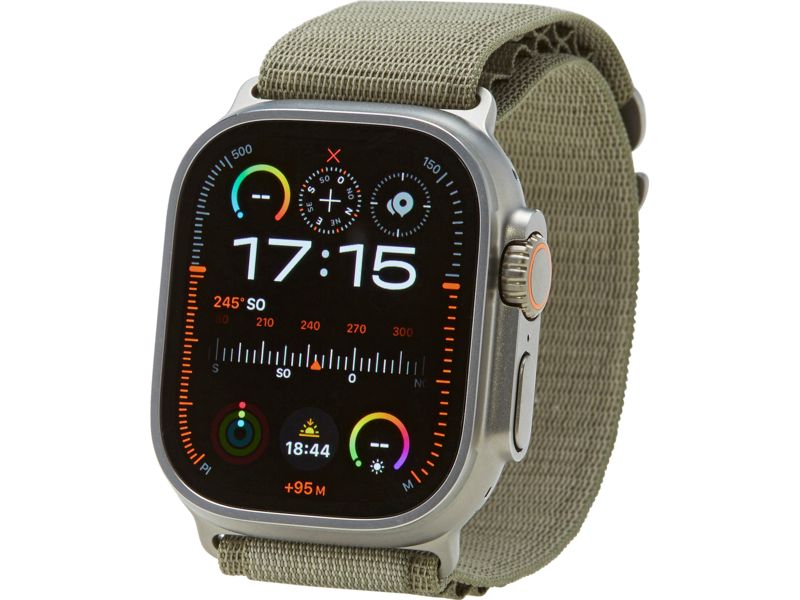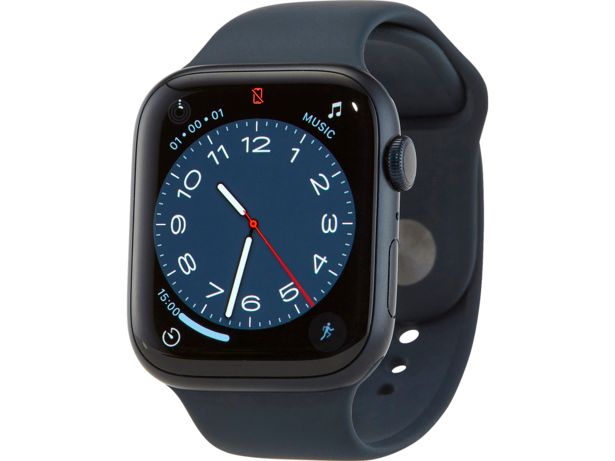By clicking a retailer link you consent to third party cookies that track your onward journey. If you make a purchase, Which? will receive an affiliate commission which supports our mission to be the UK's consumer champion.
How to track sleep on a smartwatch or fitness tracker

A fitness tracker or smartwatch with sleep tracking can offer valuable data to help you optimise your bedtime routine.
Discover how this data can help with sleep – and the limitations to be aware of. Plus, expert tips on choosing the right product for you and other ways to improve your sleep.
Tips for living well – get our free Food & Health newsletter: shop savvy, eat well, stay healthy
Why is sleep important?
Many of us routinely skimp on sleep – in fact, two thirds of adults throughout developed nations get less than eight hours' sleep a night.
Getting the NHS-recommended seven to nine (on average eight) hours' sleep – and making sure it’s good quality sleep – can improve your health, memory, mood, appearance and decision-making.

It can also affect your weight, as lack of sleep increases levels of a hormone that makes you feel hungry, while suppressing a companion hormone that makes you feel sated.
What do sleep-tracking wearables monitor?
Many fitness trackers and smartwatches, even the cheap ones, offer some level of sleep tracking. Typical stats they monitor include:
Sleep duration – how long you've been asleep or awake. All sleep tracking wearables offer this.
Sleep quality data – whether your sleep has been restless or good quality. Many offer this, some also assign you a sleep score.
Sleep stage data – how long you spent in each stage of sleep (Light, Deep, REM).
Sleep cycle alarm – some trackers will wake you up at the optimum point in your sleep cycle closest to the time you've requested.
Sleep problem detection – some can detect sleep apnoea, a potentially serious health issue in which breathing stops and starts while you're asleep. As they're not medical devices, you shouldn't rely on them – but you can take up any flagged abnormalities with your doctor.
Sleep tips – many will give you tips for sleeping better. Some also act as a dashboard or journal, allowing you to record factors that might be affecting your sleep, such as exercise and caffeine intake. This can be helpful for understanding what's impacting your sleep patterns.
Do sleep-tracking wearables really work?

Older and cheaper wrist-worn sleep trackers rely on an accelerometer (which tracks movement) to auto-detect sleep. If you're inactive for a certain length of time, or your movements – such as rolling over – are considered to be typical sleep behaviour, then the tracker will assume you're sleeping.
Newer models that can detect your heart rate and breathing are generally more accurate, as they have more data to go on.
However, even these can incorrectly think you've been asleep when you've just been dozing on the sofa – or that you've not slept at all because your sleep has been short.
Tracking sleep stages is more of an estimate than something that should be viewed as scientifically accurate. Laboratory sleep-tracking, known as polysomnography, involves measuring electrical activity in the brain, breathing pattern, body position, snoring and more.
Making data easily accessible

Wearables may not do a perfect job of recording your sleep times, but they can present the data in an easily digestible format. They can also help you get a picture of your sleep habits and how your daily behaviours impact your sleep quality.
Some people find this kind of data-led approach helpful for spotting and resolving sleep issues, but it depends on your personality. It can swing the other way and make you anxious that you aren't hitting your sleep targets, so it's worth thinking about if it's right for you.
Which? tests of sleep-tracking wearables
When we test wearables with sleep-tracking functionality our testers wear them for up to three nights, assessing:
- how detailed and easy to understand the sleep data is
- how plausible the sleep durations seem
- any outstanding capabilities or unusual features.
If the sleep functionality is hard to use, or the data is hard to make head or tail of, we'll flag this in our reviews.
If you do buy a wearable for sleep-tracking, make sure you pick one that's light and comfortable enough to keep on your wrist all night.
Fitness trackers tend to be smaller and more comfortable to wear than smartwatches, so might be a better bet if you're particularly keen to use this function.
Use our fitness tracker reviews and smartwatch reviews to find a model that ticks your boxes.
What does a typical sleep-cycle look like?
A typical night's sleep consists of several cycles of deeper and lighter sleep stages, known as REM (rapid eye movement) and Non-REM sleep.
We typically cycle through Non-REM to REM stages every 90-110 minutes, with REM cycles getting longer each time.

Non-REM sleep
- Stage 1 – lighter sleep, where you drift in and out of sleep and can be easily woken. Your eyes move slowly and muscle activity slows.
- Stage 2 – while sleep is still fairly light, your body prepares for deep sleep. Eye movements, heart rate and brain waves slow down, and your temperature drops.
- Stages 3-4 – known as deep sleep or slow wave sleep, your heart rate and breathing rate are at their lowest, muscles are relaxed and brain waves slow down further. In this stage, you'll be difficult to rouse and can feel disorientated if woken up.
REM sleep – vivid, hallucinogenic dreams that seem to form a narrative come from REM sleep. Breathing becomes faster, irregular and shallow and your brain returns to a more wakeful state. Your limbs may become paralysed to stop you acting out your dreams.
Insufficient REM sleep can blunt our ability to discern others' facial expressions, making it harder to navigate social situations. Lack of REM also affects memory and general cognitive performance.
How Apple watches track sleep

If you're using watchOS 7, 8 or 9 (compatible with all Apple Watches apart from the Series 1 and 2), you can use the Sleep app on your Apple Watch to track sleep, including:
- set up bedtime schedules and goals
- set a wake-up alarm
- set a wind-down time, meaning the watch will go into Sleep Mode (which turns on Do Not Disturb) for a period before the sleep time you're aiming for
- find out how much sleep you had
- view your sleep trends over the past 14 days.
We found that older Apple watches (pre-Series 8) struggle with enough battery life to get through the night for sleep tracking. Check out our Apple Watch reviews, or head to our guide on choosing the best Apple Watch to find the best match for your needs.
If you'd like to buy an Apple Watch, you can go to Apple directly or compare prices and availability from other retailers below:
How Fitbits track sleep
All Fitbit fitness trackers and smartwatches will track your sleep when you wear them to bed. After an hour of your body being immobile, your Fitbit will detect that you're asleep. You'll get information on:
- how many hours you've slept for and your weekly average
- your sleep score for the week and your weekly average
- your sleeping and waking up times for the week.
Fitbits with heart-rate monitors (apart from the Fitbit Charge HR and Fitbit Surge) are designed to track sleep stages and to give you graphs showing daily, weekly and monthly stats. Some also measure blood oxygen levels (pulse oximetry).
There's also the option to subscribe to Fitbit Premium with certain devices to get a more detailed 'sleep profile' and snoring monitoring.
See our reviews of Fitbit smartwatches and Fitbit trackers to see which ones we recommend.
If you'd like to buy, you can compare prices and availability at major retailers below:
How Garmin tracks sleep
Many Garmin devices offer what Garmin calls 'advanced sleep tracking'. Similar to Apple and Fitbit, these devices monitor:
- what time you fell asleep and woke up
- how much time you spent in light, deep and REM sleep
- respiration.
Some also assign you a sleep score and monitor your blood oxygen levels (pulse oximetry).
Older Garmins (those which base their sleep-tracking on your movement only) can't track your sleep stages.
Check our Garmin smartwatch reviews to find out more.
Compare prices and availability of Garmin watches that can track your sleep below:
Sleep-tracking rings

If you don't fancy a wrist-worn wearable, another option is to buy a smart ring. This is still a relatively niche market, but it is growing.
Many smart rings focus on smart payments, but some also have sleep-tracking capabilities, including the Oura (currently only available from the Oura website), which has a special focus on sleep and health.
Smart rings collect data such as your movement, heart rate, heart rate variability, body temperature and breathing to give you insights about your health and habits.
Smartphone apps for sleep-tracking

Smartphone apps rely on an accelerometer to detect movement and, by extension, sleep. So, even more than with wrist-worn devices, you can't expect them to track super accurately.
Still, many offer useful tools – for example, playing 'dreamscapes' (music, voiceovers and sound effects) to help you sleep better, giving you tips from sleep experts and teaching you cognitive techniques and behavioural strategies to reset your sleeping patterns.
The NHS recommends the following smartphone apps:
- Pzizz – free for certain features, with the option to make in-app purchases
- Sleepio – free with GP referral
- Sleepstation – free with GP referral.
Looking for a more general mindfulness and meditation app? See our guide to mindfulness apps compared
How to sleep better

- Stick to regular sleeping hours, rather than 'catching up on sleep', even if you've had a bad night's sleep the night before.
- Don't believe the myth that older people need less sleep. You may struggle to get as much restorative sleep as you age, due to medications, medical conditions and day-time dozing. But you should still aim for seven to nine hours at night.
- Cut down on evening alcohol. Alcohol makes you feel drowsy but increases your chances of waking early and blocks REM (leaving you feeling groggy next day). As it's a diuretic, it also makes it more likely you'll wake up needing the bathroom.
- Understand your rhythm. There are biological and evolutionary reasons why some of us are owls and some are larks. If you're an owl forced into an early-to-bed routine, don't beat yourself up if you can't sleep instantly. Get sunlight first thing – eat your breakfast near a window – to help reset your circadian clock
- Keep your bedroom dark and cool (18-24°C). Use our mattress reviews to buy a comfortable mattress, and don't neglect bedding – make it seasonally appropriate and breathable, and replace old pillows that have lost their support.
Get more expert tips about sleep aids for beating insomnia, including whether sleep sprays and supplements really work.






















